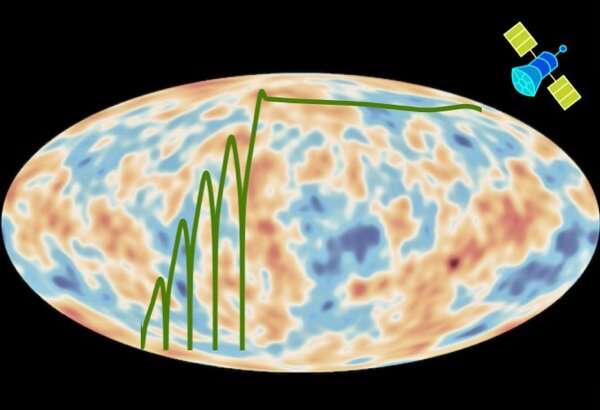Breakthrough in the nonlinear generation of primordial gravitational waves

In a Physics Review Letters paper published on Dec 15th, an international research team, led by Cai Yifu, professor of the University of Science and Technology of China, and his collaborators discovered the hypothetical possibility of resonantly generated primordial gravitational waves within high-energy physics when the universe was in its infancy. The originally invisible gravitational wave signals can be amplified by parametric resonance by four to six orders of magnitude or even larger via this phenomenon, and can then be probed by primordial gravitational wave detectors, validating theoretical models of the early universe that are inaccessible through traditional observational windows.
In the primordial universe, all matter once existed as extremely tiny elementary particles. The temperature of the universe was far beyond the highest temperature (energy scale) that humans can achieve in high-energy experiments. Therefore, the new physics of this period are considered the "desert zone" of high-energy physics.
At present, the major method for exploring the origin of the universe is to search for primordial gravitational waves. The magnitude of these waves is directly determined by the energy scale of the infant universe. Therefore, capturing primordial gravitational waves represents the only chance for humans to reach new physics at high-energy scales beyond the standard model of particle physics. However, if inflation occurred in the desert zone of high-energy physics, the amplitude of the primordial gravitational waves would be too small for detection. Thus, the traditional academic perspective considers finding primordial gravitational waves and related new physics in this energy scale as a "mission impossible."
In this work, the research team led by Cai Yifu and Misao Sasaki from University of Tokyo introduced a heavy field with a behavior of parametric resonance to nonlinearly couple with primordial gravitational waves, thereby providing an adequate energy source for the resonant amplification of primordial gravitational waves. In addition, the special dynamical properties of the background evolution of inflation ensures that the newly introduced heavy field minimally interferes with the observed primordial density perturbations, and thus the new theory can fit to current cosmological observations.
To be specific, by constructing a concrete example of the background model, the researchers accurately demonstrated that even if inflation occurred in the desert zone of the high-energy scale, exceeding the standard model of particle physics, primordial gravitational waves can be resonantly generated with a sufficiently large magnitude that is of observable interest. From a theoretical perspective, this result explicitly shows that, even in the desert of high-energy physics there exists some oasis sustaining the life of new physics.
This research provides an important scientific goal for present and upcoming primordial gravitational wave experiments worldwide, and also opens a novel window to search for new, high-energy physics beyond the standard model of particle physics.
More information: Yi-Fu Cai et al, Beating the Lyth Bound by Parametric Resonance during Inflation, Physical Review Letters (2021). DOI: 10.1103/PhysRevLett.127.251301
Journal information: Physical Review Letters
Provided by University of Science and Technology of China




















